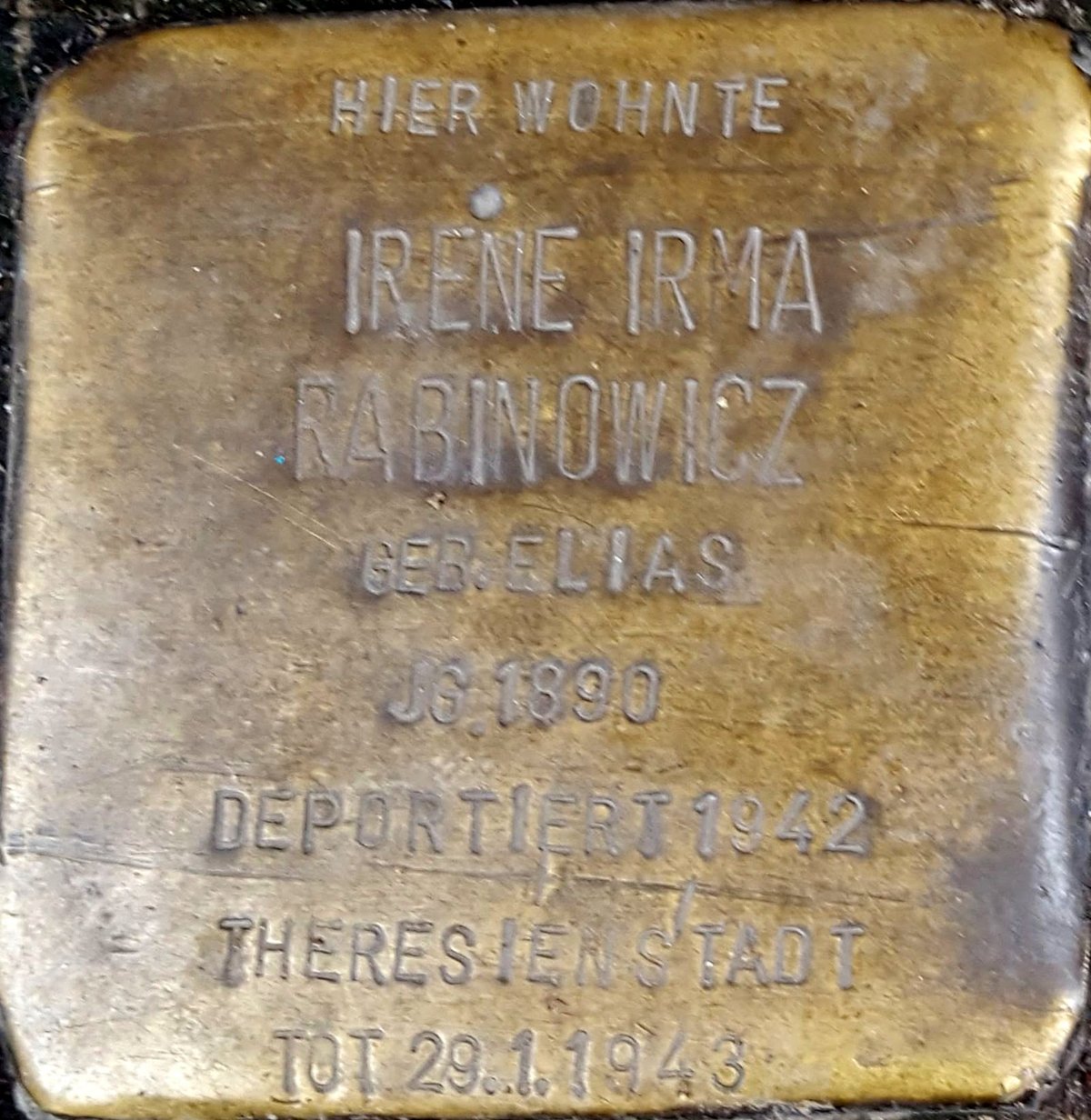
Stolperstein Dedicated To Irene Irma Rabinowicz Geb. Elias
Visiting the Stolperstein for Irene Irma Rabinowicz in Wiesbaden, Germany
Introduction
Stolpersteine, or “stumbling stones,” are poignant memorials embedded in sidewalks across Europe, commemorating victims of the Holocaust. This guide focuses on the Stolperstein dedicated to Irene Irma Rabinowicz in Wiesbaden, Germany, providing historical context, location details, visiting tips, and resources for a meaningful experience.
History and Significance of the Stolpersteine
The Stolpersteine project, initiated by artist Gunter Demnig, personalizes Holocaust remembrance. Each stone, a 10x10cm brass plaque, marks the last freely chosen residence of an individual persecuted by the Nazis. These stones aim to bring history to the forefront of daily life, prompting reflection as people “stumble upon” these memorials. In Wiesbaden, the project is coordinated by the Aktives Museum Spiegelgasse. (Aktives Museum Spiegelgasse)
Irene Irma Rabinowicz: Her Story
Irene Irma Rabinowicz (née Elias), born in 1890, lived with her husband Heinrich at Kaiser-Friedrich-Ring 42 in Wiesbaden. They were deported in 1942 to Theresienstadt. Heinrich perished there on November 27, 1942, and Irene was murdered on January 29, 1943. (Jewiki) Their Stolpersteine serve as a testament to their lives and the tragic fate they shared with countless others. (Find a Grave: Irene Irma Rabinowicz) (moebus-flick.de)
Location and Accessibility
The Stolperstein for Irene Irma Rabinowicz is located at Kaiser-Friedrich-Ring 42, Wiesbaden, Germany. (Traces of War) (Mapcarta) This central location is easily accessible by public transport, with Wiesbaden Central Station (Hauptbahnhof) nearby. The Stolperstein is situated on the sidewalk, accessible to all at street level.
Visiting Hours and Tickets
Stolpersteine are public memorials accessible 24/7, free of charge. No tickets are required.
Practical Visitor Tips
- Best Time to Visit: While accessible anytime, daylight hours offer better visibility and a safer environment. Consider visiting on International Holocaust Remembrance Day (January 27) or during other commemorative events. (Folklife Magazine)
- Finding the Stolperstein: Use online maps, GPS coordinates (approximately 50.073599, 8.232794), or dedicated Stolpersteine apps for precise navigation. (Traces of War) (Wiesbaden Lebt)
- Respectful Engagement: Approach the Stolperstein with quiet reflection. Cleaning the brass plaque with a soft cloth is a common practice. Some visitors leave small stones, flowers, or candles. Discreet photography is acceptable. (pragueviews.com)
Nearby Attractions and Further Exploration
Enhance your visit by exploring nearby sites related to Wiesbaden’s Jewish history:
- Wiesbaden Synagogue: Visit the modern synagogue, a symbol of resilience and community revival.
- Jewish Cemetery Wiesbaden: Reflect amidst the historic gravestones, tracing the history of the Jewish community.
- Aktives Museum Spiegelgasse: Delve deeper into Wiesbaden’s Jewish history and the Stolpersteine project. (AM Spiegelgasse)
Guided Tours and Community Involvement
Consider joining a guided tour focusing on Jewish heritage in Wiesbaden, often including Stolpersteine sites. Check with the Aktives Museum Spiegelgasse or local tourist information. (Wiesbaden.de) Opportunities to sponsor Stolpersteine or participate in cleaning initiatives may also be available. (Folklife Magazine)
Frequently Asked Questions (FAQ)
- What are Stolpersteine? Small, brass-plated memorials embedded in sidewalks across Europe, commemorating individuals persecuted by the Nazis.
- What are the visiting hours? Stolpersteine are accessible 24/7.
- Are there any fees? No, Stolpersteine are free to visit.
- How can I find the Stolperstein for Irene Irma Rabinowicz? Use online maps, GPS, or the “Stolpersteine in Wiesbaden” app.
Additional Resources
- Official Wiesbaden Tourism Website
- Stolpersteine Project
- Wikipedia: Stolpersteine in Wiesbaden
- Germany.info
Conclusion
Visiting the Stolperstein for Irene Irma Rabinowicz is a powerful act of remembrance. By understanding the history and engaging respectfully, you contribute to keeping the memory of Holocaust victims alive.










































































